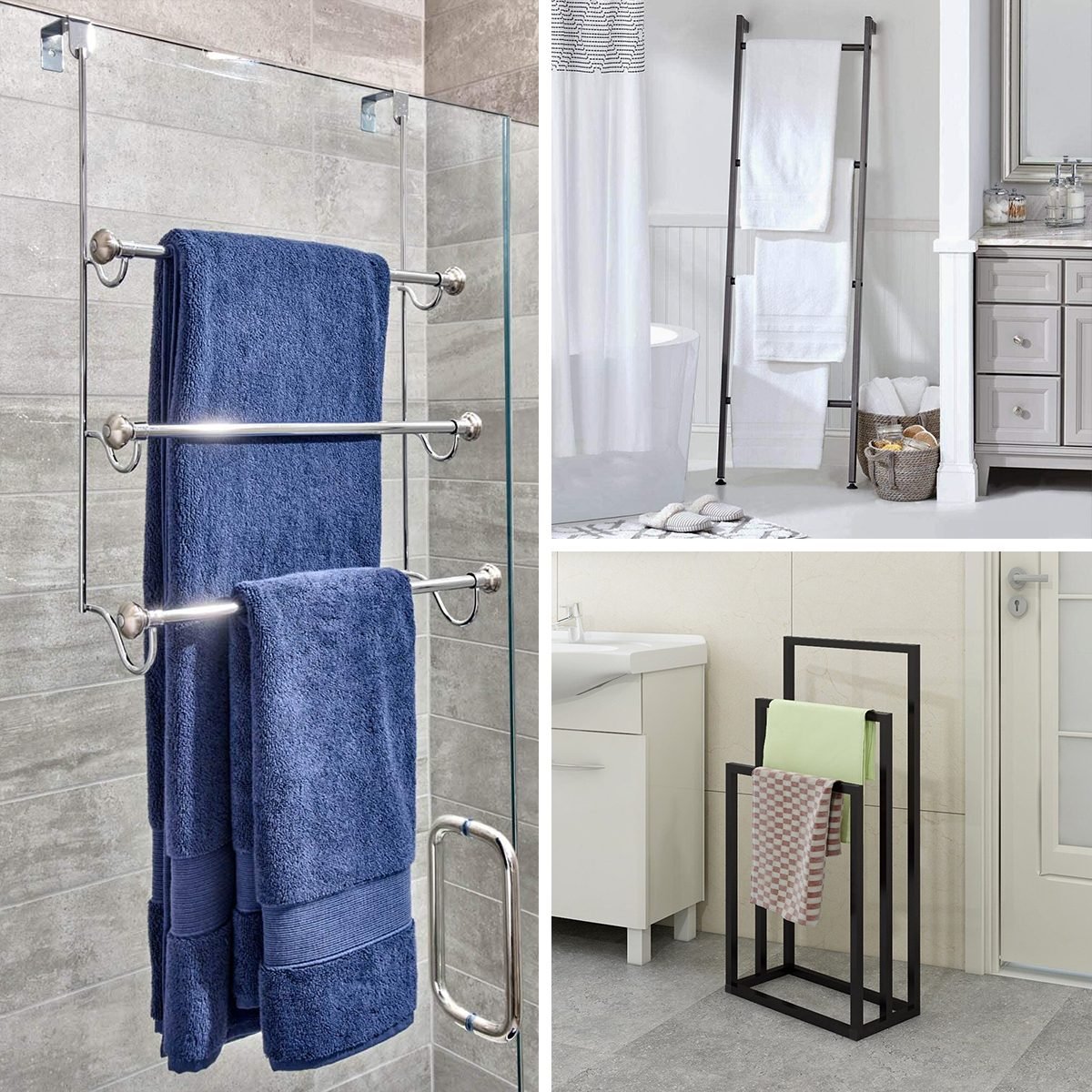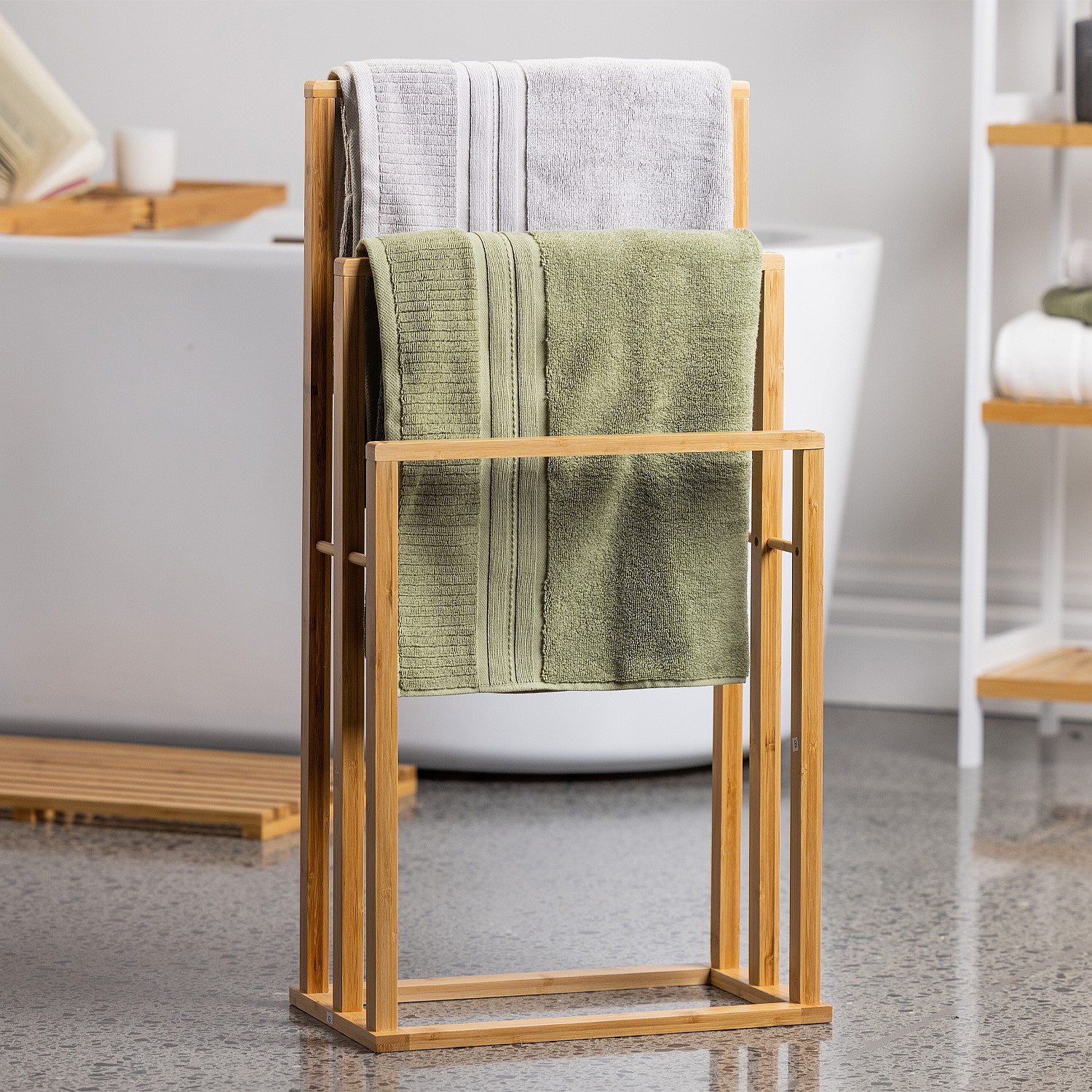Towel Bar Styles and Designs

Towel bars are an essential part of any bathroom, providing a convenient and stylish way to hang towels. They come in a wide range of styles and designs, allowing you to choose the perfect option to complement your bathroom decor.
Towel Bar Styles
The style of your towel bar can significantly impact the overall aesthetic of your bathroom. Here are some popular towel bar styles:
- Modern: Modern towel bars typically feature clean lines, minimalist designs, and sleek finishes. They often come in materials like stainless steel or chrome, with a polished or brushed finish.
- Traditional: Traditional towel bars often have ornate designs, intricate details, and a classic look. They are often made from brass or nickel, with a polished or antique finish.
- Contemporary: Contemporary towel bars blend modern and traditional elements, creating a stylish and sophisticated look. They can be made from various materials, including stainless steel, brass, and chrome, with a variety of finishes.
- Rustic: Rustic towel bars have a natural, earthy feel. They are often made from wood, iron, or reclaimed materials, with a distressed or weathered finish.
Towel Bar Materials
The material of your towel bar will affect its durability, style, and price. Here are some common towel bar materials:
- Stainless Steel: Stainless steel is a popular choice for towel bars due to its durability, resistance to corrosion, and sleek appearance. It is available in various finishes, including brushed, polished, and satin.
- Brass: Brass is a durable and elegant material that adds a touch of sophistication to any bathroom. It is often available in polished, antique, or brushed finishes.
- Chrome: Chrome is a shiny and reflective material that is often used for towel bars. It is known for its durability and resistance to corrosion. Chrome towel bars are available in polished or satin finishes.
- Nickel: Nickel is a durable and versatile material that is often used for towel bars. It is available in a variety of finishes, including brushed, polished, and satin.
Towel Bar Finishes
The finish of your towel bar can significantly impact its appearance and style. Here are some common towel bar finishes:
- Brushed: A brushed finish creates a subtle, textured look. It is often used for stainless steel, brass, and nickel towel bars.
- Polished: A polished finish creates a shiny and reflective surface. It is often used for chrome and brass towel bars.
- Matte: A matte finish creates a soft, non-reflective surface. It is often used for stainless steel and nickel towel bars.
Towel Bar Styles, Materials, and Finishes
Here is a table showcasing various towel bar styles with their corresponding materials and finishes:
| Style | Material | Finish |
|---|---|---|
| Modern | Stainless Steel | Brushed, Polished |
| Traditional | Brass | Polished, Antique |
| Contemporary | Chrome | Polished, Satin |
| Rustic | Iron | Distressed, Weathered |
Towel Bar Placement and Installation: Pictures Of Towel Bars In Bathrooms

Towel bars are an essential part of any bathroom, providing a convenient place to hang towels after showering or bathing. Choosing the right placement and installation method is crucial for both functionality and aesthetics. This section explores the best placement strategies and installation techniques for towel bars.
Towel Bar Placement Considerations
The placement of a towel bar significantly impacts its usability and the overall bathroom design. Factors to consider include:
- Accessibility: Towel bars should be placed within easy reach of users, typically at a height between 48-54 inches from the floor. This ensures comfortable access for people of varying heights.
- Proximity to Sinks and Showers: Towel bars should be located near sinks and showers for easy access after handwashing or bathing. A distance of 12-18 inches from the sink or shower is generally ideal.
- Bathroom Layout: The layout of the bathroom plays a crucial role in determining the best towel bar placement. Consider the location of other fixtures, such as the toilet, bathtub, and vanity, to ensure a balanced and functional design.
Towel Bar Installation Methods
There are various installation methods for towel bars, each offering unique advantages and disadvantages:
- Wall-Mounted: This is the most common installation method, involving attaching the towel bar directly to the bathroom wall. Wall-mounted towel bars are versatile and can be easily installed in most bathrooms.
- Freestanding: Freestanding towel bars are typically placed on the floor and do not require wall mounting. These options are ideal for bathrooms with limited wall space or for creating a more minimalist aesthetic.
- Recessed: Recessed towel bars are installed within the wall, creating a sleek and integrated look. This method requires more extensive construction and is often best suited for new bathroom renovations.
Installing a Wall-Mounted Towel Bar
Installing a wall-mounted towel bar is a relatively simple DIY project that can be completed in a few steps:
- Choose the location: Select the desired location for the towel bar, ensuring it is within easy reach and near a sink or shower.
- Mark the location: Use a pencil to mark the location of the towel bar on the wall. Ensure the marks are level and centered.
- Drill pilot holes: Drill pilot holes at the marked locations using a drill bit that is slightly smaller than the screws provided with the towel bar.
- Install the towel bar: Attach the towel bar to the wall using the provided screws. Ensure the screws are securely fastened and the towel bar is level.
Installing a Freestanding Towel Bar
Installing a freestanding towel bar is even simpler than installing a wall-mounted option:
- Choose the location: Select the desired location for the towel bar, ensuring it is in a stable and accessible area.
- Assemble the towel bar: If necessary, assemble the freestanding towel bar according to the manufacturer’s instructions.
- Place the towel bar: Position the towel bar in the desired location and ensure it is stable and balanced.
Installing a Recessed Towel Bar
Installing a recessed towel bar requires more extensive construction and is typically best left to professional contractors. The process involves cutting a recess into the wall and then installing the towel bar within the recess. Consult with a contractor for professional installation.
Towel Bar Functionality and Features

Towel bars are more than just a place to hang your wet towels; they’re a key component of bathroom functionality and design. They can be customized to suit your specific needs and preferences, offering a range of features beyond just a simple bar.
Towel Bar Features
Towel bars come in various styles and designs, each with its own unique features that enhance functionality and aesthetics. Some of the most common features include towel rings, robe hooks, and towel bars with integrated shelves.
- Towel Rings: These circular bars are perfect for hanging hand towels or washcloths. They’re often used in pairs, placed near sinks or showers for easy access. They’re great for small bathrooms, as they don’t take up much space. They also offer a more elegant look than traditional towel bars, adding a touch of sophistication to the bathroom.
- Robe Hooks: Robe hooks are sturdy hooks designed for hanging heavier items like bathrobes, towels, or even bags. They are typically placed near the shower or bathtub for easy access. They’re great for maximizing space and keeping robes off the floor. They also offer a more practical solution for hanging larger items than traditional towel bars.
- Towel Bars with Integrated Shelves: These towel bars combine functionality and storage. They feature a shelf that sits below the bar, providing space for toiletries, soaps, or other bathroom essentials. This feature is perfect for smaller bathrooms, where space is at a premium. They also offer a more organized and efficient way to store bathroom items, keeping everything within reach.
Advantages and Disadvantages of Towel Bar Features
Each towel bar feature has its own advantages and disadvantages, depending on your specific needs and preferences.
- Towel Rings:
- Advantages: Space-saving, elegant, easy to use.
- Disadvantages: Can only hold small items, may not be suitable for heavier towels.
- Robe Hooks:
- Advantages: Sturdy, versatile, perfect for heavier items.
- Disadvantages: Can be bulky, may not be aesthetically pleasing to everyone.
- Towel Bars with Integrated Shelves:
- Advantages: Space-saving, combines storage and functionality, adds a touch of organization.
- Disadvantages: Can be more expensive than traditional towel bars, may not be suitable for all bathroom styles.
Towel Bar Features in Different Bathroom Settings
Towel bar features can be incorporated into various bathroom settings to enhance functionality and aesthetics.
- Small Bathrooms: Towel rings and towel bars with integrated shelves are ideal for small bathrooms, as they maximize space and offer storage solutions. They help to keep the bathroom tidy and organized.
- Large Bathrooms: In larger bathrooms, robe hooks can be used to hang bathrobes and towels, while towel bars with integrated shelves can be used to store toiletries and other bathroom essentials.
- Modern Bathrooms: Modern bathrooms often feature sleek and minimalist towel bars, towel rings, or robe hooks that complement the overall design aesthetic. They are typically made from chrome, stainless steel, or other modern materials.
- Traditional Bathrooms: Traditional bathrooms often feature ornate towel bars and robe hooks made from brass or other traditional materials. These features add a touch of elegance and sophistication to the bathroom.
Towel Bar Features Summary, Pictures of towel bars in bathrooms
The following table summarizes the functionality and features of various towel bar types:
| Towel Bar Type | Functionality | Features | Advantages | Disadvantages |
|---|---|---|---|---|
| Towel Ring | Hanging hand towels or washcloths | Circular bar | Space-saving, elegant, easy to use | Can only hold small items, may not be suitable for heavier towels |
| Robe Hook | Hanging bathrobes, towels, or bags | Sturdy hook | Sturdy, versatile, perfect for heavier items | Can be bulky, may not be aesthetically pleasing to everyone |
| Towel Bar with Integrated Shelf | Hanging towels and storing toiletries | Towel bar with shelf | Space-saving, combines storage and functionality, adds a touch of organization | Can be more expensive than traditional towel bars, may not be suitable for all bathroom styles |
Pictures of towel bars in bathrooms – When searching for inspiration for your bathroom, pictures of towel bars often showcase the overall aesthetic. From sleek modern designs to rustic farmhouse styles, the towel bar plays a crucial role in creating the desired ambiance. For a festive touch, consider adding christmas fingertip towels for bathroom decor.
These towels can add a pop of holiday cheer while still maintaining a cohesive design. Whether you prefer a minimalist or maximalist approach, finding the perfect towel bar to complement your chosen towels is essential for a well-styled bathroom.
Pictures of towel bars in bathrooms can be a great source of inspiration for your own space. While they’re primarily functional, towel bars can also add a touch of style to your bathroom. If you’re looking for something a little more luxurious, you might consider a heated towel rail, which can help keep your towels warm and cozy.
But can a heated towel rail heat a bathroom ? The answer is, it depends on the size of the rail and the size of the bathroom. Regardless, a heated towel rail is a great addition to any bathroom, adding both comfort and a touch of elegance.